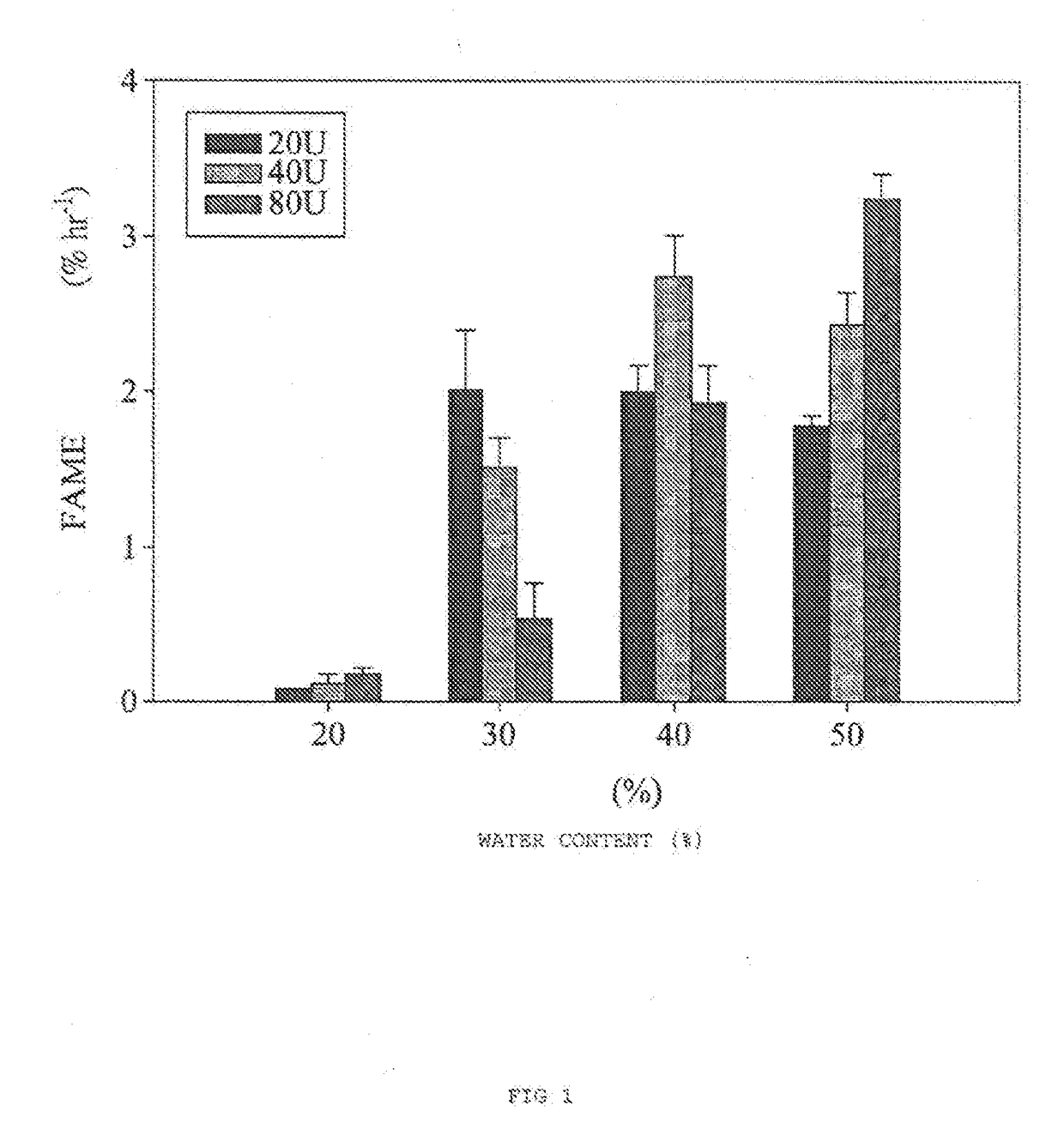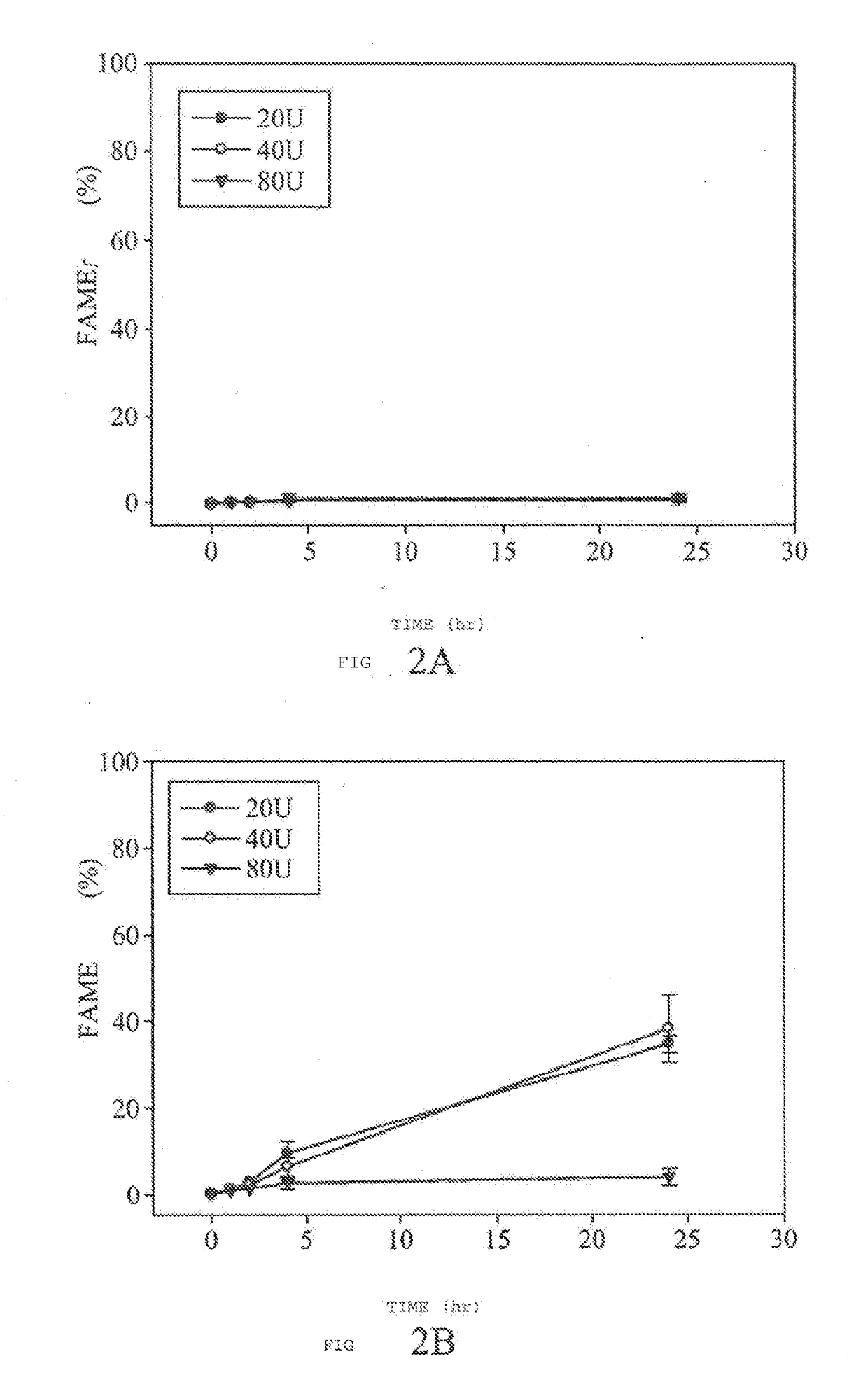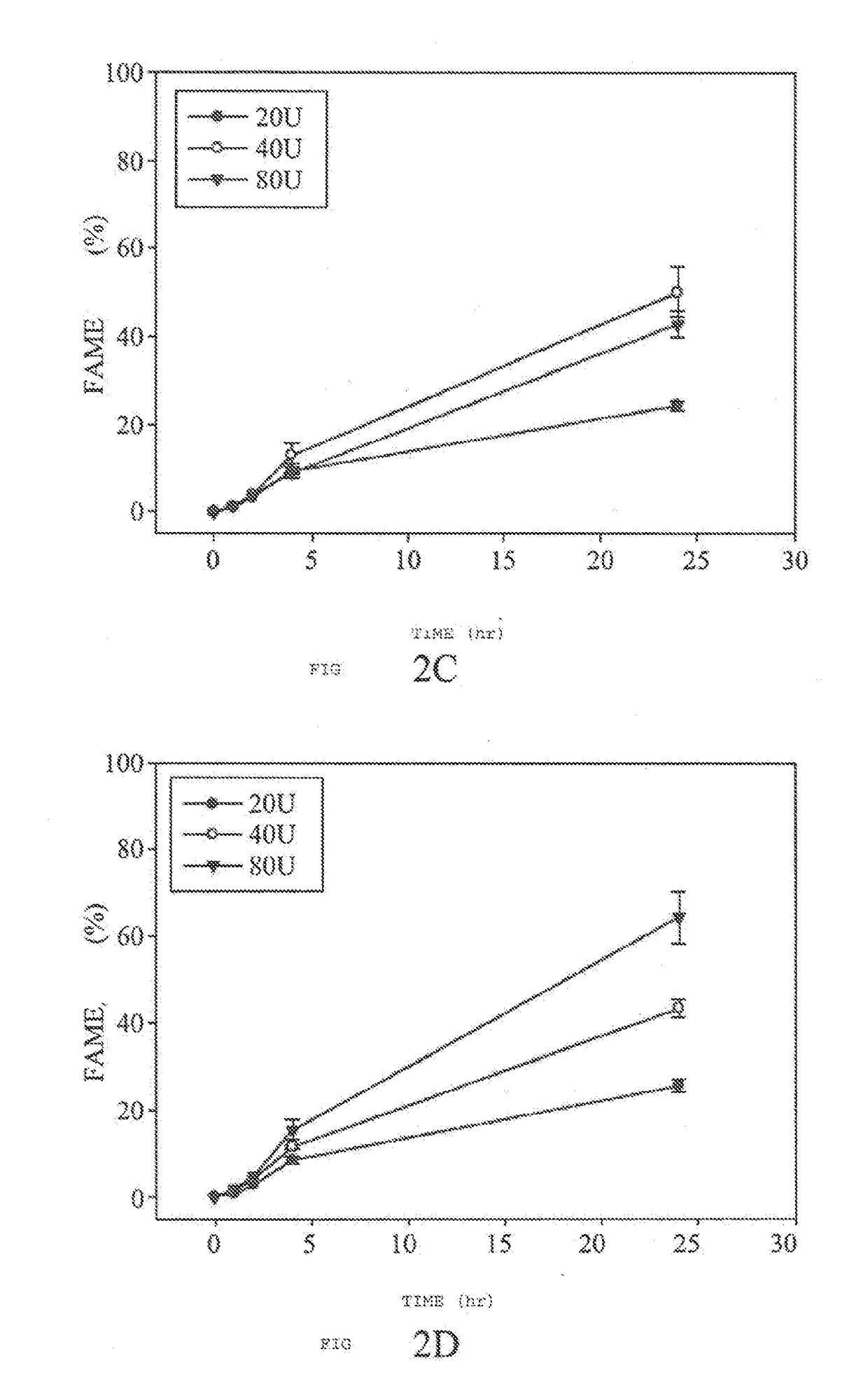Methods for producing biodiesel by recombinant lipase
a technology of biodiesel and lipase, which is applied in the direction of biofuels, fermentation, biochemical apparatus and processes, etc., can solve the problems of high energy consumption, environmental pollution, and the need for expensive refined oils to produce biodiesel, and achieve the effect of increasing the interfacial surface area, effective catalytic effect, and increasing fam
- Summary
- Abstract
- Description
- Claims
- Application Information
AI Technical Summary
Benefits of technology
Problems solved by technology
Method used
Image
Examples
example 1
ons of Oil Products
[0056]Jatropha seeds were obtained from Bioptik Biotechnology Inc. (Taiwan) and Shanhai Pass Horse Club (Taiwan). Karanja seeds and castor seeds were respectively collected from the Northern and Southern Taiwan. Crude oil products were obtained in accordance with hexane extraction in a Soxhlet device as described in Oliveria et al. (Biomass Bioenergy 33, 449-453, 2009). Standard fatty acid esters were purchased from Sigma Chemical Co. (St. Luis, Mo., USA).
example 2
ons of Yeast Strains and Lipases
[0057]Four types of recombinant P. pastoris strains carrying the expression vectors of recombinant CRL isozymes, CRL1, CRL2, CRL3 and CRL4, respectively, were constructed by the methods described by Chang et al. (J. Agric. Food Chem. 54, 815-822. 2006; J. Agric. Food Chem. 54, 5831-5838. 2006), Lee et al. (Biochem. J. 366, 603-611. 2002), and Tang et al. (Arch. Biochem. Biophys. 387, 93-98. 2001). The amino acid sequences of CRL1, CRL2, CRL3 and CRL4 were represented by SEQ ID NOs. 1, 2, 3 and 4, respectively, and encoded by the nucleic acid sequences represented by SEQ ID NOs. 5, 6, 7 and 8, respectively.
[0058]The constructed recombinant P. pastoris strains were each incubated in a shaking bottle containing 50 mL of glycerin medium (2% of glycerin, 1% of yeast extract, and 0.5% of ammonium sulfate) and 100 μg / ml of zeocin, and incubated at 20° C. and a rotating speed of 200 rpm for 5 days. Afterwards, the culture was centrifuged at 7000×g for 10 minu...
example 3
st
[0059]The activity of each of the lipases was determined using a spectrophotometer (Multiskan FC Microplate Photometer, Thermo Scientific) and using p-nitrophenylbutyrate as a substrate. The reactants for the determination contained 10 μL of the enzyme solution to be tested for, 10 μL of 20 mM phosphate buffer (pH 7.0), 0.25% of Triton X-100 and 0.5 mM of the substrate. The reaction was performed at 37° C. The increased absorbance due to the generation of the enzymatically hydrolyzed product, p-nitrophenol, at 405 nm within 10 minutes was measured and recorded, so as to calculate the initial rate of the lipase. One unit (U) of activity is defined as the amount of enzyme needed for the release of 1 micromole (μmol) of p-nitrophenol per minute under standard conditions.
[0060]The activities of the CRL1 to CRL4 enzyme solutions obtained in example 2 were 2857 U / mL, 674 U / mL, 307 U / mL and 586 U / mL, respectively.
PUM
 Login to View More
Login to View More Abstract
Description
Claims
Application Information
 Login to View More
Login to View More - R&D
- Intellectual Property
- Life Sciences
- Materials
- Tech Scout
- Unparalleled Data Quality
- Higher Quality Content
- 60% Fewer Hallucinations
Browse by: Latest US Patents, China's latest patents, Technical Efficacy Thesaurus, Application Domain, Technology Topic, Popular Technical Reports.
© 2025 PatSnap. All rights reserved.Legal|Privacy policy|Modern Slavery Act Transparency Statement|Sitemap|About US| Contact US: help@patsnap.com



